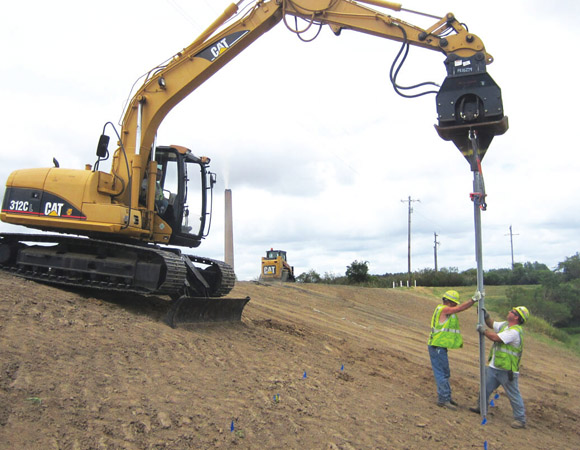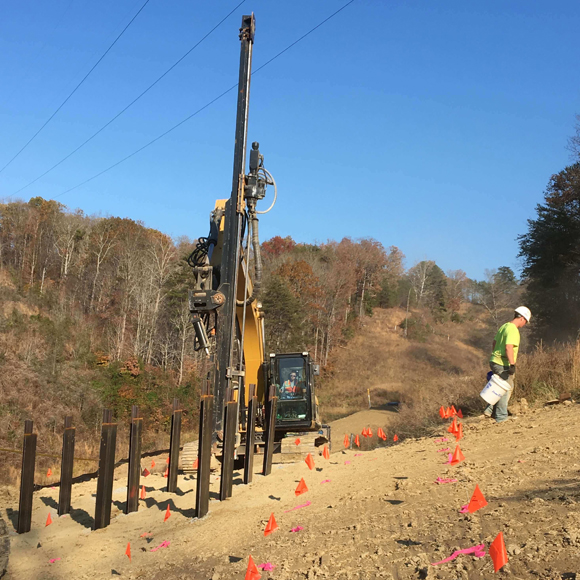Types of SRT Projects
The Geopier SRT® system can be used to stabilize roadway slopes, commercial developments, creek banks, unlined canal slopes, active slides, and mudflows. SRT can also be used to help stabilize new slopes and excavations, allowing for steeper slopes during design.
How SRT Works
The Geopier SRT® system is designed to stabilize slopes where the soil conditions consist of an upper zone of weathered, loose, soft or disturbed soil over a stable zone of soil or soft rock. The closely spaced Plate Pile elements form a series of horizontal barriers where the soil arches between the plates, forming a continuous line of resistance against downslope movement.
The Geopier SRT Advantage
Geopier SRT® offers significant cost savings and reduced construction schedule versus various slope remediation alternatives. Our finished product blends in naturally with the surroundings (no concrete facades) and allows for easy reseeding and plating of vegetation.
Deep Global Stability Problems
For deeper seated failure planes (up to 45 feet deep), consider Geopier Rammed Aggregate Pier® systems. Our patented systems can significantly increase the composite shear strength of the soil mass, increasing the factor of safety against global instability.
Partnering with Tensar
Geopier’s SRT system can be coupled with Tensar® retaining wall and geogrid slope stabilization products to maximize design and cost savings.

